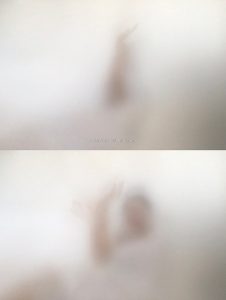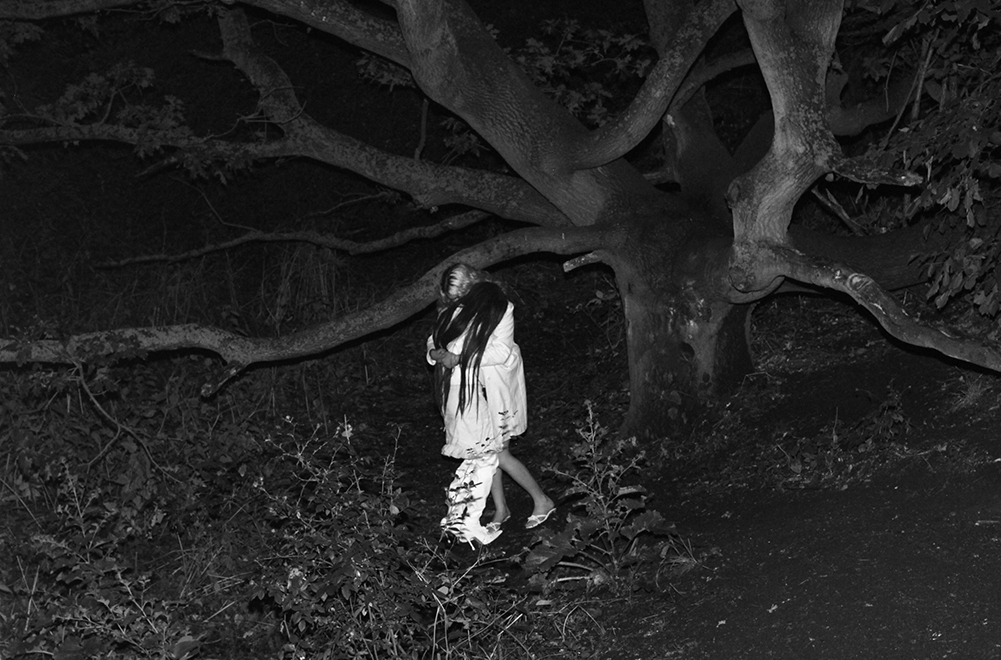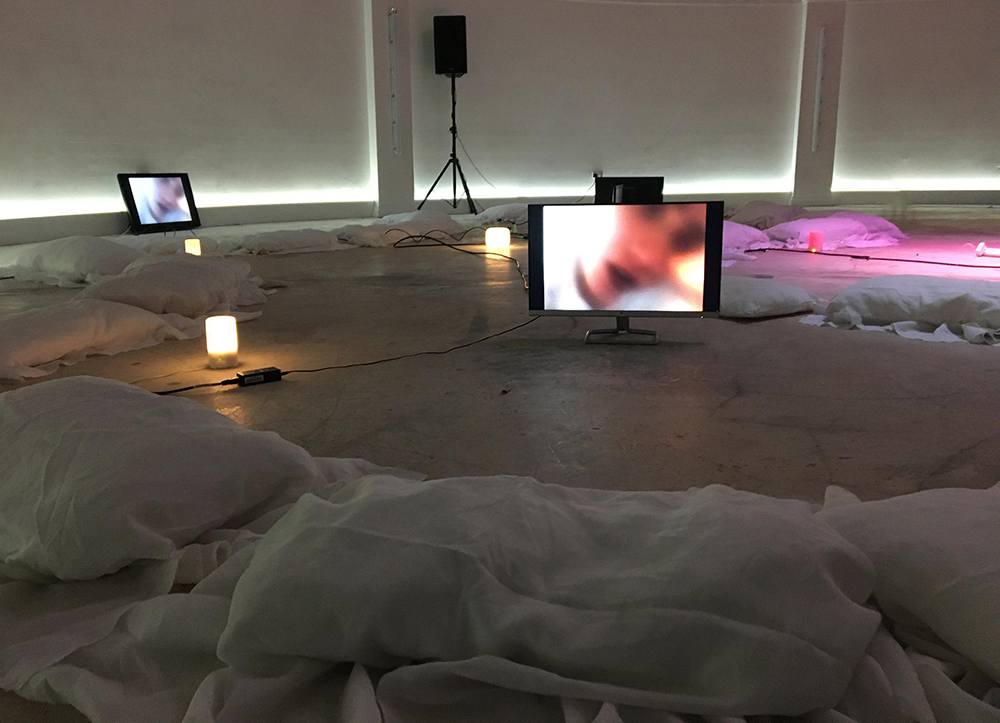“Reality is both subjective and collective,” writes Ewa Poniatowska (aka Ewa Awe) via email, when I ask the artist, DJ and performer her thoughts around belief in a post-truth word. “I think I like to address this in my work — how and when these meet, and what happens when they perfectly align or totally disperse.”

We are corresponding in the lead up to AQNB’s collaborative event with 3hd 2020, Hyperobjectivity, taking place this Saturday September 26 in London, for which Poniatowska presents the narrated sonic walk and performance ‘New Miasma Theory Chapter 2’. Working across sound, visual art, performance and DJing, the London-based Polish artist has played the likes of Tate Modern and Beursschouwburg, Brussels, and exhibited at Zacheta, Warsaw as well as Goswell Road, Paris. For Hyperobjectivity, presented as part of 3hd 2020’s ECO-Centers companion programme at a secret location in the British capital’s northwest, Poniatowska performs the second in her eponymous series of fantastical sonic fables. Produced in collaboration writer Sanja Grozdanic, ‘New Miasma Theory Chapter 2’ draws from oral storytelling rituals to unpack “notions of miasma as ghostly presence and ethereal symbols of collective beliefs, blurring boundaries between reality and fiction.”
“Intuition is somehow magical, also in art making,” Poniatowska comments, on how notions of magic seep into her practice. “It’s not always the case but you really feel it once activated — something magical happens and cannot be contained.”
Such notions of collective belief-making, fantasy and fictions permeate Poniatowska’s interdisciplinary practice, floating to the surface as we speak on topics ranging from miasma and ambience, ‘vibe theory’ and persistent hauntings from the past.
** This is the second in your series of pieces exploring the notion of miasma. Where did your interest in this idea come from?

Ewa Poniatowska: It’s originally an obsolete medical theory that was around for a long time, claiming that bad air was to blame for the spread of diseases. Or that one could become obese by inhaling the smell of food. There’s this amazing image that depicts cholera in Victorian London as this cloudy creature floating in the haze and stomping over humans.
I did a collaborative project with my friend Tosia Leniarska for Warsaw’s Zacheta gallery, about a trendy mist diffuser as a modern object of fetish and a magical communication portal. I was exploring mist, and somehow following this line of work I arrived at the idea of miasma, which seemed like a good metaphor for all the ideas I was interested in. An invisible but powerful force from elsewhere — or an ethereal symbol of a collective belief — and how that can resemble sound. Felix Guattari also referred to the time of capitalist acceleration as the age of miasmas and fogs. History comes full circle, look at pollution: it’s the miasmas literally killing us again.
** I wanted to ask if you have any thoughts on what seems like a growing interest in ambient music, or just in the concept of ambience generally lately? I recall you organised an intriguing ambient event called Elysium at HQI studios in London before the lockdown…
EP: Do you think there’s more interest in ambient music at the moment then let’s say 10 years ago? Hard to say, but I had this conversation recently with a friend of mine. We were discussing whether the revival of ambient music can be linked to specific socio-political conditions and whether there are currently any parallels with the ‘80s. It might have something to do with conceptualisation of music in general, or maybe a collective overstimulation that ambient music addresses well by ‘filling in the space.’ Often described as background music it can be pretty boring but good ambient actually gives me quite intense feelings, like a soothing wave.

In terms of our event Elysium, it felt like some kind of world of fairies, a lot of emotional vocals. I organised it quite spontaneously with a friend of mine who performs under A Portal To Jump Through. But it came from a need to bring people together on a Sunday afternoon, to exist collectively in a different way than during traditional music events or club nights. To lie down and place more of a focus on listening, no alcohol. I think I was maybe just getting tired of the predictability of certain cultural scenarios and spaces. It felt nice, hopefully we can resume in 2021. We really wanted to experiment with building our own instruments.
** When we were first talking about our Hyperobjectivity event you discussed your curiosity towards ‘vibe theory’. I’m keen to know more about this concept and how it figures in your work?
EP: Vibe theory is a kind of joke to me that I stumbled across online. An anti-concept concept, calling for a return of emotional relation to art. There was a quote like “vibe is a residue of great art” — I think it’s pretty funny but also accurate. Vibing together as an ultimate somatic connection and understanding, something that can’t really be described with words. I mentioned it because it’s similar to the idea of ambience, where it’s all about the mood and emphasis is placed on the overall atmosphere rather than any specific thread.
** For me with your projects I get a sense of interest in the past — notions of ruins, the ‘stains of time’ — there’s a sort of hauntological character to it. Do you think a lot about history in your work?

EP: Oh yeah? I mean it’s impossible to create or exist ignoring history, it lives around us. It’s important to remember and question who gets to construct it, speak about it and with what aims. But I’d say I’m more interested in the now and how we can exist together in the present moment to inform potential futures. It sounds quite vague and naive but I really hope that by existing together temporarily during music events let’s say, we will be able to reach a new collective anchor point to move from, finding new ways of existing together long-term.
But yes I guess I do think about it quite a lot, since you mentioned it. I am interested in how history plays into collective memory and how it can manifest in collective hysterias for example. There are so many mad examples of these that I’ve been looking into a lot recently. Medieval manias where people danced to themselves to death, or more recent laughter epidemics in schools that can’t be attributed to any cause other than psychological transmission, or some spectral force. They are usually linked to some precarious conditions — trauma or conservative environments. Maybe modern miasma is stress, austerity and violence… here we have miasma again, wow I can’t stop referring to it.

If we treat ghosts as visitors from the past then yes, they are for sure in the works that I have done. For example in January I held an ASMR lecture-performance about changing perceptions of intimacy, for which I enacted a ghost-like YouTube creature, stuck in an illusory state, held between realities and time which appeared on multiple screens in the space. But anyhow, on social media we are all ghosts in a way.**













